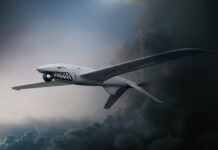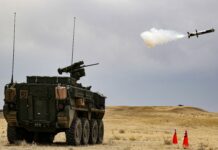Warfare is changing, and it is important to understand why. The heart of this transformation is the technological convergence of micro-miniaturization, computing power, robotics, sensors, and Artificial Intelligence (AI).
Of these converging elements, AI is the most active accelerator, as it enables humans to interact with machines in new and powerful ways. This interaction, called multidomain manned-unmanned teaming, is the integration of humans with machines.
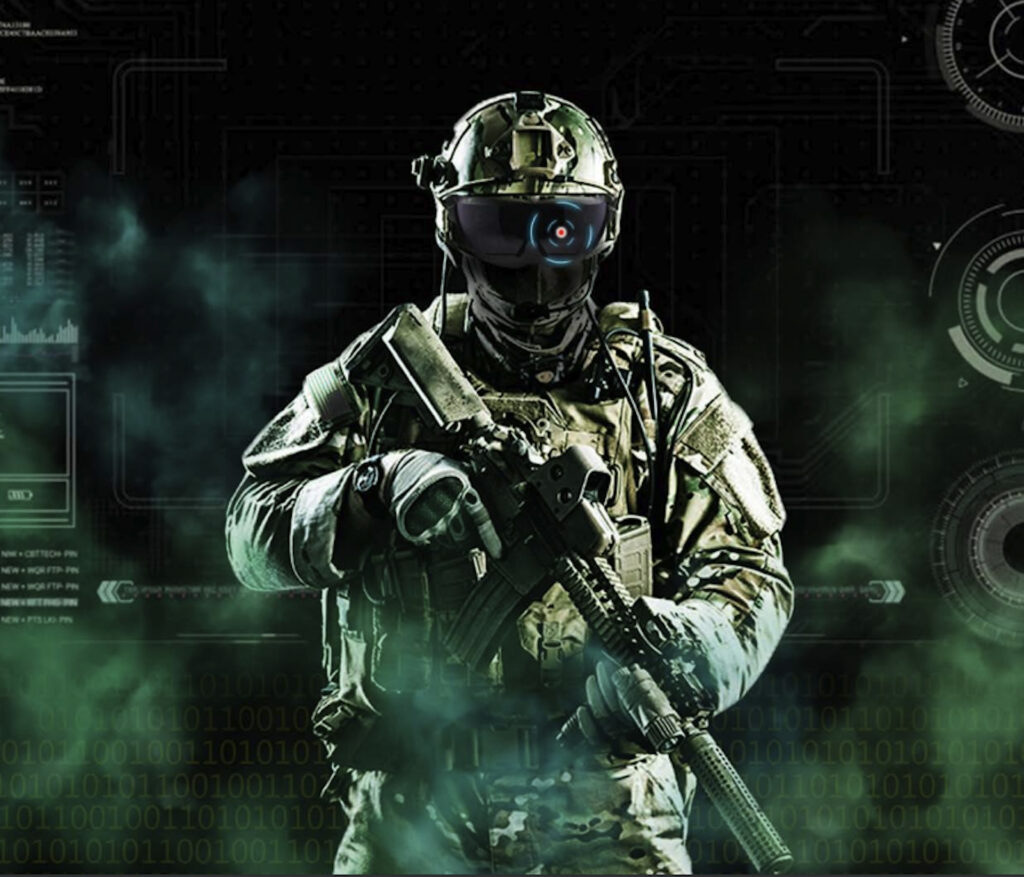
Credit: US Army
The best systems,” as described by Paul Scharre, a best-selling author of several books on robotic systems and AI, “will combine human and machine intelligence to create hybrid cognitive architectures that leverage the advantages of each. Hybrid human-machine cognition can leverage the precision and reliability of automation, without sacrificing the robustness and flexibility of human intelligence.” This is the ‘Centaur’ approach which takes its name from a mythological creature that is half-human and half-horse, combining the best of both into a single creature. Likewise on the weapon system side, by merging both, the Centaur approach is the next step in multi-domain man-unmanned teaming and will separate winners from losers in the next war.
Centaur Warfighting is a multidomain man-machine teaming capability that is still in its infancy. It combines the skills of both humans and machines to improve warfighting capabilities. This requires the integration of cutting-edge technology like AI, robotics, and man-machine interfaces. With Centaur Warfighting, multidomain man-machine teams will coordinate across land, sea, air, space, and cyber domains, as well as with allied forces, in real time. Centaur Warfighters will have improved situation awareness (SA) to gain insights, make informed decisions, and act faster than ever before.
Three wars fought in the past three years show a trend toward increasing cooperation between man and machine, and ultimately the Centaur approach to warfare: the Second Nagorno-Karabakh War (2020), the Israel-Hamas War (2021), and the ongoing Russian-Ukrainian War (2022-?).
In the first, Azerbaijan used robotic systems to set the conditions for a multidomain, joint, 44-day campaign that resulted in a decisive victory over Armenia. This war has been called the first war in history to be won primarily by robotic systems, specifically through the use of Unmanned Aerial Vehicles (UAVs) and loitering munitions. The second war occurred in May 2021 when Hamas attacked Israel with a storm of artillery rockets and attempted to use infiltration tunnels to bring the fight to the Israeli population. In response, the Israel Defence Forces (IDF) conducted a lightning counterattack that was synchronised by AI to win the conflict in 11 days. The Israelis claim that this was the first war in history to be won by AI, but it was truly a hybrid human-AI effort. The third conflict, the ongoing Russian-Ukrainian War (2022-?), foreshadows the power of new weapons and tactics, and adapting old weapons in new ways, across all domains, in a conflict of grinding attrition. In Ukraine, a nascent Centaur approach to war flies in the battlespace every day as Ukrainian and Russian fighters use small Unmanned Aerial Vehicles (sUAVs) to hunt each other.
From these three wars are derived nine ‘disruptors’ that exemplify how war has changed from only a few years before. A disruptor is a technique, tactic, or weapon that dynamically changes the methods of warfare. These are: the transparent battlespace; the first strike advantage; top attack; the trend towards autonomous systems; AI and how it is increasing the tempo of war; the kill-web; the swarm; visualising the battlespace; and decision dominance. Against the backdrop of these nine disruptors, how will the emerging Centaur approach impact the next war?
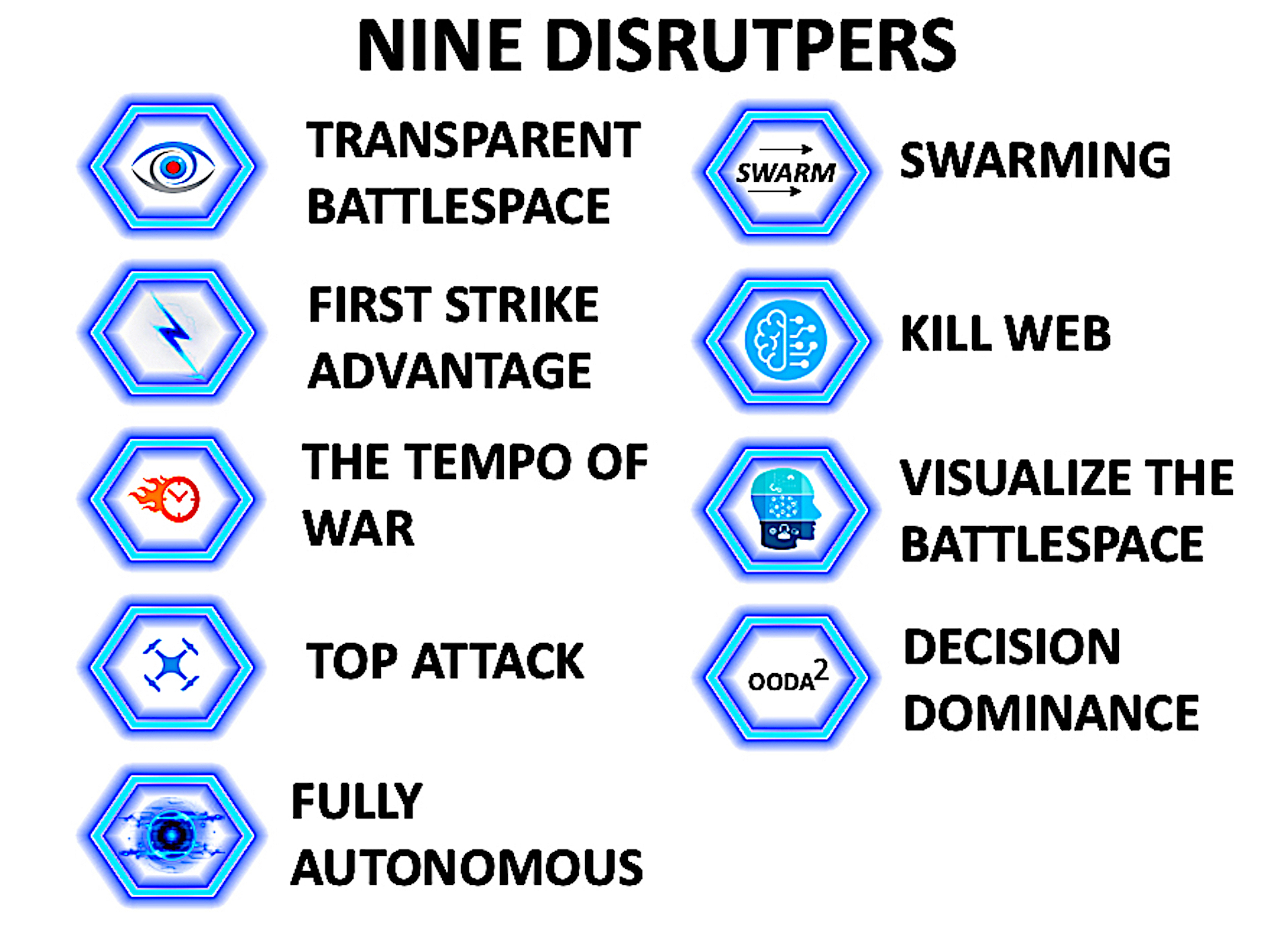
Credit: John Antal
1. The Transparent Battlespace
Warfare today is a game of hide-and-seek, and the seekers are winning. Seeing enemy forces in real time, across the depth of the battlespace, is the most pressing disruptor of traditional warfare. In the past, armies could hide and stay out of range, engaging when the time was right. This is becoming increasingly difficult to do. Multi-domain capabilities, possessed today by even third-tier military powers, composed of layered sensors from the muddy ground to outer space, reveal every unmasked target in the battlespace. Creating a transparent battlespace is not a simple task, as it takes sophisticated systems, purpose, and planning, but this has already occurred in Nagorno-Karabakh in 2020, Gaza in 2021, and in Ukraine in 2022-2023. Today, the US, NATO, Russia and China plan to do the same with layered multidomain sensor networks that provide real-time intelligence, surveillance and reconnaissance (ISR) information. In a transparent battlespace, unmasked forces face swift destruction by enemy fires.
A decisive factor in warfare, therefore, is to mask friendly forces. Masking is the full spectrum, multidomain effort to deceive enemy sensors and disrupt enemy targeting. New technologies can help friendly forces mask by deceiving the enemy’s sensors with optical, thermal and electronic decoys, and disrupt the enemy’s targeting kill-chain with electronic warfare and cyber-attacks that generate false-positive targets in the battlespace. A Centaur approach that connects commanders to sensor networks to see friendly forces as they appear in all domains, across the entire electromagnetic spectrum, in real time, will verify if units are masked.
2. The First Strike Advantage
The side that strikes first has the advantage. In a transparent battlespace, where every unmasked target is observed and can be hit, a first strike by long range precision fires can turn into a decisive advantage. The Azerbaijanis crippled the Armenians with a first strike during the Second Nagorno-Karabakh War (2020). During the Israel-Hamas War (2021), Israel did not strike first, but responded with a devastating AI-enabled second strike that ended the war in 11 days. Russia’s first strike on Ukraine in 2022, although hitting over 2,000 targets in the first week, was indecisive. To gain the greatest advantage, the first strike must be overwhelming.
It is easy to visualise NATO forces in the Baltics or other NATO nations bordering Russia suffering under a Russian first strike. We must consider the same in the Pacific region regarding China and prepare accordingly. In each case, a Centaur approach that seamlessly connects humans to networked robotic systems can help the defending forces mask from an enemy first strike and then synchronise an immediate counterstrike. Israel’s reaction to Hamas’s first strike is noteworthy, as the IDF responded swiftly, shielding population centres with the Iron Dome air defence system and then responding with an AI synchronised precision counterstrike, rapidly locating and destroying Hamas rocket launchers and attacking over 97 km (60 miles) of a massive underground tunnel labyrinth dubbed ‘the Metro’.
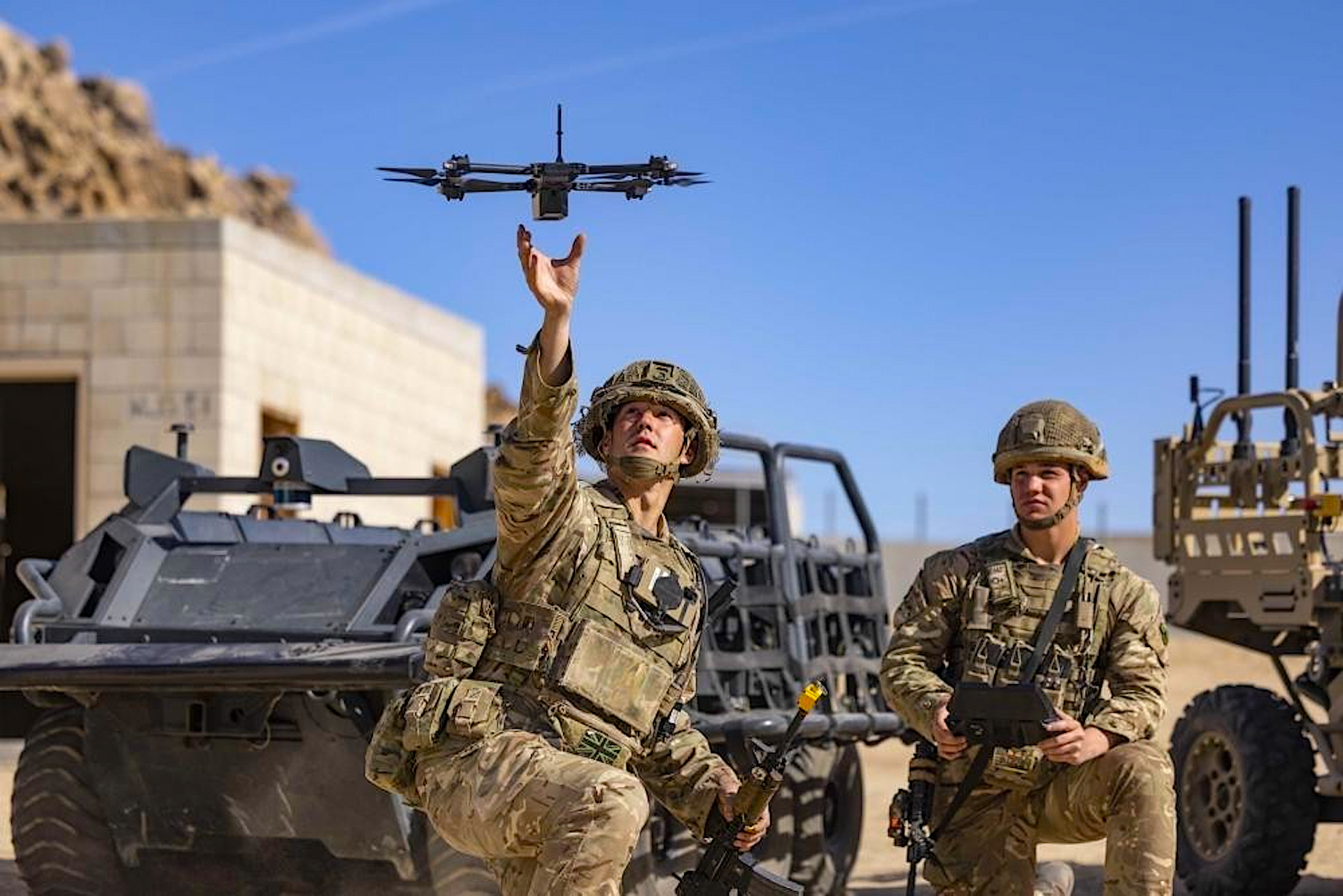
Credit: US Army
3. Strikes from Above
Robotic, systems, especially UAVs and loitering munitions, are playing an increasing role in modern warfare, providing a relatively inexpensive, sense-and-strike capability that speeds up the kill chain.
These unmanned aerial sense-and-strike systems are hard to counter. They came of age during the Second Nagorno-Karabakh War, with the dramatic use of the Bayraktar TB-2 UAV as well as the Harop and Orbiter loitering munitions. In Ukraine, we have witnessed piecemeal attacks by all forms of UAV and loitering munition. These make dramatic videos, and have tactical effects, but they are not battle winners as they have not yet been employed en masse. Once connected to a sense-and-strike network, employed in mass numbers, and coordinated in a Centaur approach, that will change.
To defeat UAVs and loitering munitions, there are four general categories of technologies: laser, microwave, electronic jamming, and kinetic attack. Laser weapons use directed energy to focus a beam of light to heat and burn up an incoming projectile or UAV. High Power Microwave (HPM) weapons use the power of directed microwaves to overload circuitry and fry electronic components to knock drones out of the sky. Electronic jamming interferes with the UAV’s control, guidance, and targeting systems. Kinetic solutions include missiles that hit or explode near the target, or UAVs that fly toward the drone, launch nets, projectiles, detonate in the proximity, or simply ram the enemy system. An effective Integrated Air Defence System (IADS) must employ combinations of all four.
As the threat from UAVs and loitering munitions increases, a fully autonomous counter drone system is something that NATO forces urgently need to develop and field. Tying all these systems together to operate seamlessly to defend large areas of the battlespace will require a Centaur.
4. Becoming Autonomous
Imagine a peer conflict in 2028. Warfare is hyper-accelerated. Sensors blanket the battlespace. If unmasked by optical, thermal, or other sensors, the enemy automatically locates and targets you. Networked, smart munitions are becoming increasingly intelligent. No longer needing GPS for positioning, navigation and timing (PNT), they are difficult to jam. To adapt to the speed of modern battle, militaries are moving to weapons with pre-programmed decision-making capabilities and more fully autonomous weapon systems.
The combination of AI with long-range precision fires will be revolutionary. Connected in a multi-domain sensor network, and enabled by AI—and its subsets, Machine Learning (ML) and Deep Learning (DL)—these fully autonomous systems dominate the battlespace. ML automatically improves the AI as networked systems share information. DL imitates the workings of the human brain in processing data and creating patterns to select decisions based on the pattern recognition of layered data sets. This AI will operate as a ‘neural network’ forming a ‘brilliant’ fires system that will deliver highly accurate, long-range, and lethal fires in real-time. Long-range precision fires include many types of delivery systems (artillery, drones, balloons, and missiles launched from ships and aircraft). When these fires are linked to multi-domain sensor networks, as well as synchronised and optimised by and AI-enabled network, this combination will generate a kill-web to accelerate the precision and lethality of strikes.

Credit: US Navy
5. AI and the Tempo of War
Speed is essential for waging war successfully. Operating faster than your opponent provides a winning advantage. Currently, all military forces operate human-centric kill-chains. A kill-chain is a sequential process that operates at human speeds and represents the sequence of events required to sense and strike enemy targets. Traditionally, Human In The Loop (HITL) or Human On The Loop (HOTL) centric, this involves identifying a target, deploying a weapon system to engage the target, launching the munition, destroying the target, and verifying battle damage after the strike: In short, find, fix, fire, finish, and feedback. Christian Brose, in his book titled “The Kill Chain,” identified the kill-chain as a three-step process: gain understanding of what is happening, decide what to do about it, and take action (kinetic or non-kinetic). The traditional kill-chain can be slow, as the targeting system must pass through multiple human operators before striking.
Experimenting with new technology and procedures to speed up the kill-chain, the US Army executed a kill chain time of 20 seconds in September 2020 at Yuma Proving Ground in Arizona. This is extremely fast, but the goal is to speed up the kill chain further. To do that, you need an AI-enabled sensor-to-shooter kill-web.
6. The Kill-Web
A Centaur-enabled kill-web is substantially different from a human-centric kill chain. The kill-web is commanded and employs an AI-enabled process to operate at machine speeds. This design rapidly synchronises the effects of many networked munitions in time, space and purpose. In this Centaur approach, the human sets the intent and the AI speeds up sensor-to-shooter timing exponentially. In a conference in 2019, US Missile Defence Agency Director Vice Admiral Jon Hill explained the need for a AI-enabled kill-web: “With the kind of speeds that we’re dealing with today, that kind of reaction time that we have to have today, there’s no other answer other than to leverage artificial intelligence.” According to a 2021 US Army publication, Chinese Tactics, the Chinese view of “intelligentised” [Sic] warfare envisions the use of AI to enhance its military capabilities. China’s military experts predict that lethal “intelligentised” weapons will be common by 2025.
7. The ‘Super Swarm’
Swarming is a tactic that engages an adversary from multiple directions at the same time. Swarming is not new, but a ‘super swarm’, however, is a further evolution of the concept. Imagine hundreds of drones, operating in a swarm, controlled by a single Centaur where the swarm is directed by the human and AI directs the individual elements. The Centaur steers the super swarm and the AI engages to simultaneously attack multiple targets from different angles. The robotic systems in the super swarm act as ‘intelligent agents’ of a collective, performing actions to achieve goals which are set by the AI. The US Navy already proved this capability in 2017 during Low-Cost UAV Swarming Technology (LOCUST) programme tests. The programme involved AI-enabled Unmanned Aerial Vehicles (UAVs), including Raytheon’s Coyote loitering munitions, in a network to collaborate, share information, sense, strike, and assess.
8. Visualise the Battlespace
Commanders observe, orient, decide, and act (the OODA Loop) by recognising the pattern the enemy has presented and applying a counter-pattern. If you can do this significantly faster than your opponent, the enemy will be unable to react to every act taken. Accelerating a human commander’s OODA loop will require enhanced cognitive computer systems that can depict the multi-domain battlespace in real time with an All-Domain Common Operational Picture (ADCOP). A Centaur approach ADCOP projects relevant information, especially friendly and known enemy actions, in all five domains (land, sea, air, space, and cyber). Sharing this ADCOP with all pertinent commands in near real-time provides for effective and true mission command and will allow a commander to execute operations from anywhere there is connectivity to the network, not just at a command post.
The need for an ADCOP is urgent. Currently, the information needed for cross-domain manoeuvre is neither holistically displayed in all five domains, generated automatically, nor easy to comprehend. Traditionally, large headquarters display a Common Operational Picture (COP) on multiple screens cluttered with icons in layers of increasing complexity. Staff personnel working within these information silos create most of the data that appear on these screens, with the corresponding human time-lag.
An All Domain AI-enabled ADCOP, depicting actions in real time, and allowing a commander to observe, orient, decide, and act in seconds, will revolutionise mission command. To accomplish this will require a shared understanding across the force, enabled by technologies that empower commanders to see the battlespace, rapidly consider courses of action, decide, and issue orders faster than the enemy.
9. Decision Dominance
Decision dominance is the ability to strip away the enemy leader’s options and dominate their decision-making. Information warfare is a subset of decision dominance. Applying information warfare and all the previous disruptors more effectively than your opponent generates a situation where you truly dominate the enemy’s ability to decide and act. A Centaur approach to mission command is required to produce decision dominance. As the warfighting tempo quickens, leaders must develop and maintain situational awareness faster than ever before. “Speed, range, and convergence give us the decision dominance,” Army Chief of Staff, Gen. James McConville said in a 2021, “and decision dominance gives us the overmatch we need.”
The next war will likely involve unprecedented cooperation between man and machine. On February 24, 2023, Applied Nano Materials published a scientific abstract by Shaikh Nayeem Faisal, et al., titled “Noninvasive Sensors for Brain–Machine Interfaces Based on Micropatterned Epitaxial Graphene,” which demonstrated the viability of large-scale deployment of brain−machine interfaces (BMIs) for soldiers to command robotic systems with their minds. Soldiers would have a voice-command-free communication to operate external devices through brain waves.
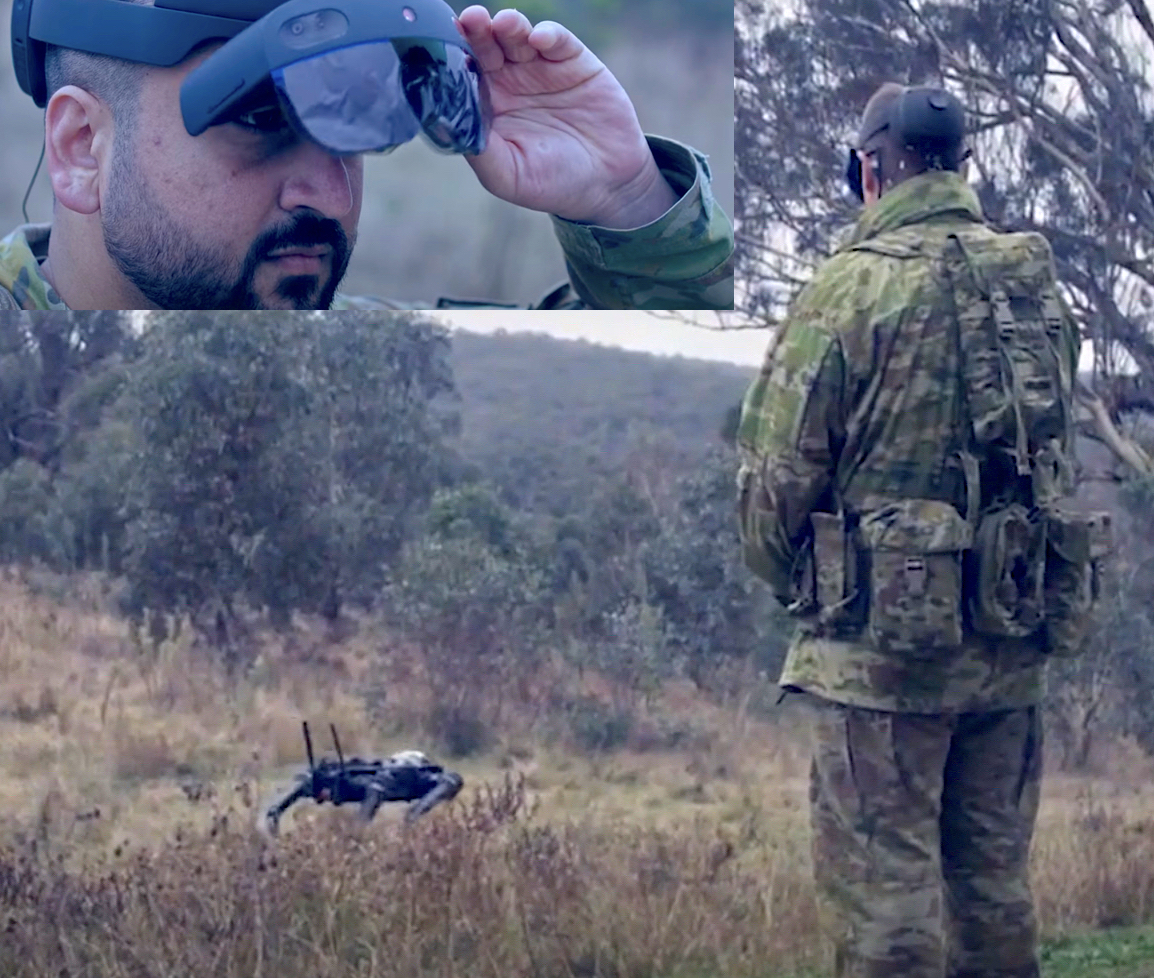
Credit: Australian Army
This is no longer a story from science fiction, but an actual capability that will only improve with further research and funding. The Australian Army’s Robotic and Autonomous Systems Implementation & Coordination Office (#RICO) demonstrated this ability in February 2023 and released a video of a soldier using a BMI and a Microsoft HoloLens can control a robot with his mind. The potential to use BMI to command all types of robotic systems, including super swarms, is evident.
The next step in multidomain manned-unmanned teaming is a further blending of the best of man and machine, a Centaur approach. Western militaries, therefore, are at an historical watershed. If we do not learn from recent wars and understand the forces that are disrupting our traditional methods, we will not get a second chance.
John Antal



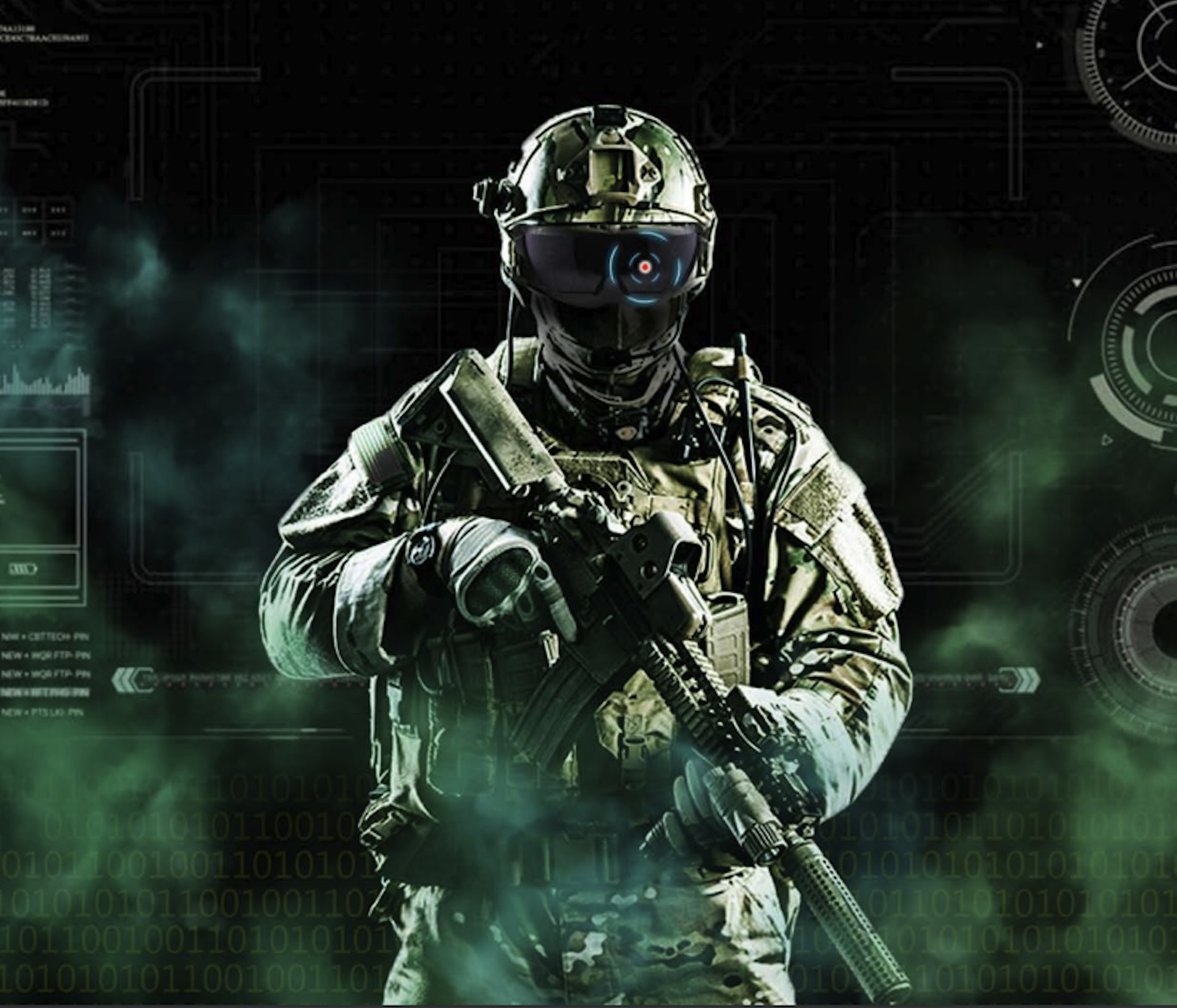

![The Pentagon’s new ‘Project Linchpin’ could shake things up US Army Maj Eric Sturzinger, assigned to Artificial Intelligence Integration Center, gives a capability brief during for Project Convergence at Yuma Proving Ground, Arizona, on 20 October 2021. [US Army/Spc Kayla Anstey]](https://euro-sd.com/wp-content/uploads/2025/11/Photo-1-Kopie-218x150.jpg)


